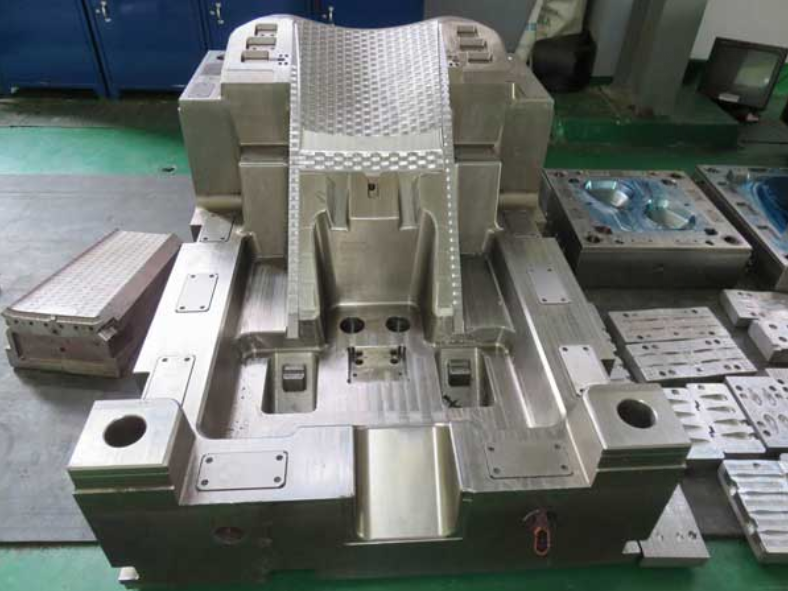Manufacturing a Round Plastic Pail Mould: A Comprehensive Guide
Introduction:
Plastic pails are widely used containers in various industries, including food processing, chemicals, and household products. To produce these essential items, manufacturers need high-quality and efficient moulds. This comprehensive guide will take you through the key steps involved in manufacturing a round plastic pail mould.

Step 1: Designing the Mould
The first step in manufacturing a round plastic pail mould is to design it. This stage involves creating a detailed blueprint that outlines the shape, size, and features of the mould. Designers use computer-aided design (CAD) software to generate accurate and precise mould designs. The design process also includes considering factors such as the number of cavities, ejector systems, and cooling channels.
Step 2: Material Selection
Choosing the right material for the mould is crucial for its durability and longevity. Commonly used materials for plastic pail moulds include hardened steel, aluminum, and beryllium copper. Hardened steel is the most popular choice due to its high strength, wear resistance, and long lifespan. Aluminum is a cost-effective alternative but has lower durability. Beryllium copper is used for complex moulds requiring high thermal conductivity.
Step 3: Machining the Mould
After finalizing the mould design and material selection, the next step is to machine the mould. This process involves cutting and shaping the selected material into the desired mould design. Precision machining techniques, such as milling, drilling, and grinding, are used to ensure the mould\’s accuracy and smooth finish. CNC (Computer Numerical Control) machines are commonly employed for their high precision and efficiency.
Step 4: Heat Treatment and Surface Treatment
Once the mould is machined, it undergoes heat treatment to enhance its hardness and strength. Heat treatment processes, such as quenching and tempering, are applied based on the material used. After heat treatment, the mould undergoes surface treatment, which involves polishing, coating, or plating. Surface treatment enhances the mould\’s appearance, smoothness, and resistance to corrosion.
Step 5: Assembly and Testing
In this step, the various components of the mould are assembled together. This includes attaching the core and cavity inserts, ejector pins, and cooling system. Once assembled, the mould undergoes comprehensive testing to ensure its functionality and quality. Testing involves checking for proper fit, dimensional accuracy, and performance under simulated production conditions.

Step 6: Fine-tuning and Modifications
During testing, any issues or deficiencies identified in the mould\’s performance are addressed. Fine-tuning and modifications are made to optimize the mould\’s functionality and ensure it meets the desired specifications. This may involve adjusting the cooling system, changing the ejector pins, or modifying the core and cavity inserts. Fine-tuning is crucial to ensure the mould produces high-quality plastic pails consistently.
Step 7: Production and Maintenance
After successfully manufacturing the round plastic pail mould, it is ready for production. The mould is installed in an injection moulding machine, where molten plastic is injected into the cavity to create the plastic pail. Regular maintenance is essential to prolong the mould\’s lifespan and optimize its performance. This includes cleaning, lubrication, and periodic inspection for any signs of wear or damage.
Conclusion:
Manufacturing a round plastic pail mould involves a series of precise steps, starting from design to production. Each stage requires careful attention to detail and adherence to quality standards. By following this comprehensive guide, manufacturers can ensure the production of high-quality plastic pail moulds that meet the requirements of various industries.
ก่อนหน้า:Newly Designed Chair Mould
ต่อไป: Gate Injection Molding: Revolutionizing the Manufacturing Industry
-
Features and Benefits of Plastic Injection Molding Machine
2023-4-24
Plastic injection molding is a widely used manufacturing process in which molten plastic is injected into a mold cavity....
ดูรายละเอียด -
Stylish and Durable Plastic Molded Chairs: Enhancing Comfort and Aesthetics
2023-11-17
Plastic molded chairs have become increasingly popular in recent years, thanks to their stylish designs, durability, and...
ดูรายละเอียด -
Exploring the Advancements in Electronics Mold Technology
2023-11-21
Electronics mold technology plays a crucial role in the production of electronic devices, enabling the creation of intri...
ดูรายละเอียด -
Designing and Manufacturing of Plastic Pallet Moulds
2023-6-25
Plastic pallets have become a popular choice for businesses worldwide due to their durability, ease of handling, and cos...
ดูรายละเอียด -
Industrial Plastic Molds: Precision Tools for Manufacturing
2024-5-31
In the vast world of manufacturing, industrial plastic molds have become an indispensable and important tool with their ...
ดูรายละเอียด -
Exploring the Advancements in Automotive Mold Technology
2023-8-3
Introduction The automotive industry has experienced significant technological advancements over the years. One crucial ...
ดูรายละเอียด







